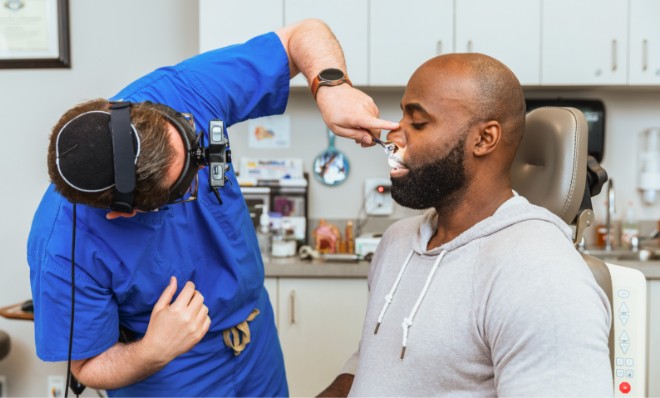
by Roheen Raithatha, M.D. & B. Todd Schaeffer, M.D., F.A.C.S.
Sinuses are air-filled spaces in the face and head that are lined by mucous membranes. They produce mucus (or phlegm) to cleanse the nose and upper respiratory tract. There are multiple sinuses located on each side of our face (maxillary, ethmoid, frontal, sphenoid) which have small openings that drain mucus and circulate air from the nose.
What is Sinusitis? Irritants or infections in the nose can cause swelling of the nasal cavity and sinuses, leading to pressure and pain. The extra mucus that is produced along with the swelling can cause blockage of the breathing passages. The common symptoms of sinusitis include:
- Pain/pressure over sinuses
- Discolored nasal drainage or mucus
- Nasal congestion
- Inability to smell
- Low grade fever
- Cough
- Phlegm in throat
- Post nasal drip
- Fatigue
Medical Treatment for Sinusitis Includes:
- Saline spray, wash, irrigation (Neilmed sinus rinse, Neti Pot)
- Decongestants - oral or nasal
- Antihistamines - oral or nasal
- Mucolytics
- Antibiotics (oral, topical, intravenous)
- Steroids (nasal or oral)

Dedicated to Providing Convenient and Exceptional Care

ESS is performed to open blocked sinuses and is usually reserved for those patients who have failed medical treatment and/or have anatomical blockages that predispose them to infection. Small endoscopes are passed into the nose to look inside the nasal and sinus passageways to remove any blockages and improve ventilation/drainage of the sinuses.
What Is Balloon Sinus Surgery?
One newer treatment option is balloon sinus surgery which is often-times performed in-office. While awake, under topical and local anesthesia, a balloon is passed into the natural opening of the sinuses. The balloon is inflated and then deflated and removed. A microfracture is made around the sinus opening of the maxillary, frontal and sphenoid sinuses, keeping them dilated and open. The advantages of the balloon treatment include less bleeding, quick recovery (usually 24 hours) and less postoperative discomfort.
The Skull Base What Is the Skull Base?
The skull base is the floor of the cranial cavity (which houses the brain) and is separated by bone from the surrounding ear, eyes, and nose.
What Do Endoscopic Sinus/Skull Base Surgeons Do?
Endoscopic skull base surgery utilizes high-resolution cameras and computer navigation in order to minimize the potential harm associated with manipulating the brain. Many of these procedures use the air-filled sinuses as corridors to access lesions of the skull base without the use of any external incisions. These involve minimally invasive techniques which afford the highest possible degree of tumor removal while preserving neurological function to the greatest extent possible.
Less Sick Days, More Living

